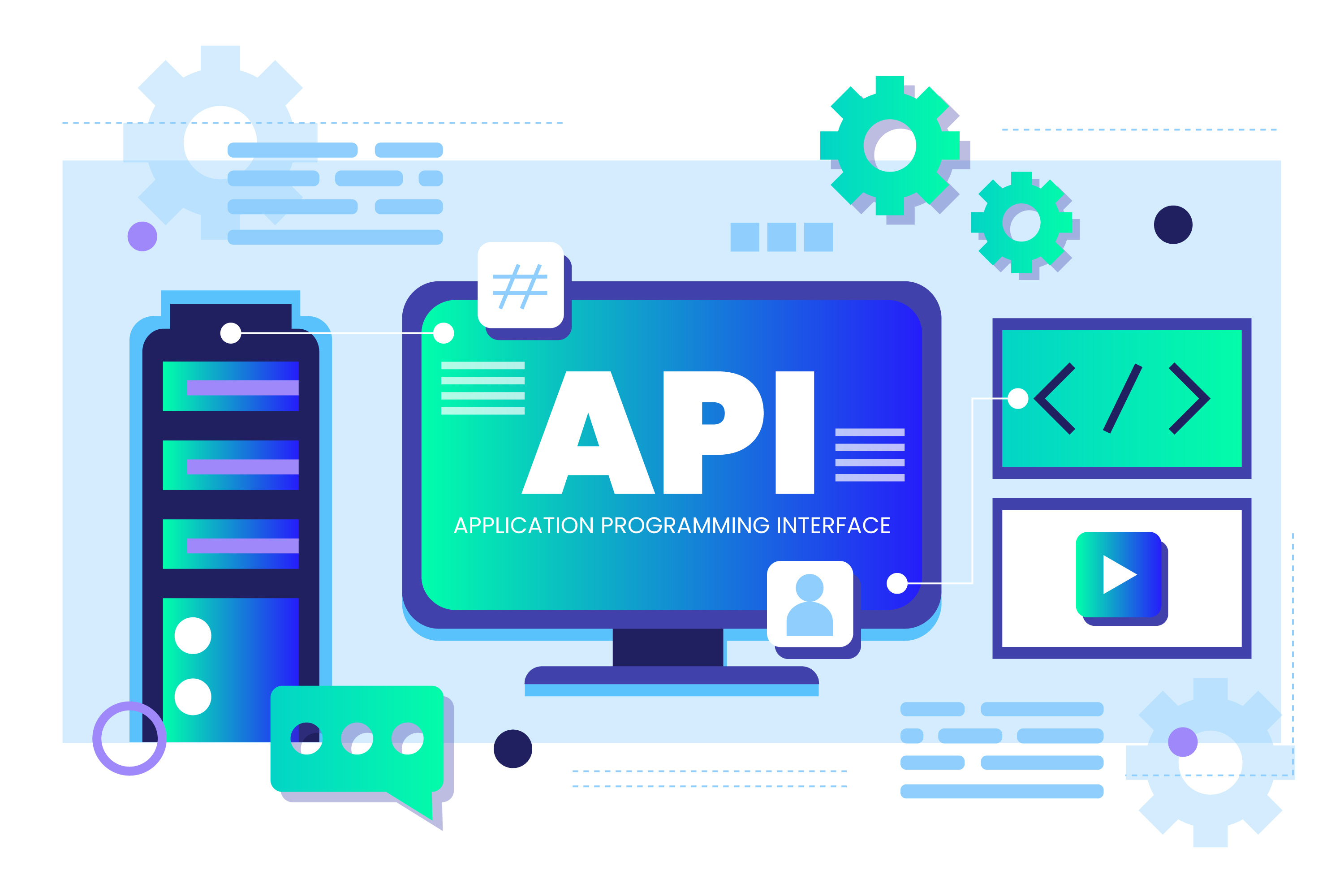Modern Web Development Architecture: Building Scalable Applications for 2025

Modern Web Development Architecture: Building Scalable Applications for 2025
The web development landscape has evolved dramatically over the past few years, with architectural patterns and technologies advancing to meet increasingly complex application requirements. As we navigate through 2025, organizations face mounting pressure to deliver scalable, high-performance applications that can adapt to changing business needs while providing exceptional user experiences.
In this article, I’ll explore the most effective architectural approaches for modern web applications, drawing on my experience leading development teams and implementing large-scale systems across various industries.
The Evolution of Web Architecture
Web application architecture has undergone several paradigm shifts since the early days of static HTML pages and monolithic backends. Understanding this evolution provides valuable context for current best practices:
From Monoliths to Microservices
Traditional monolithic architectures—where all application components exist within a single codebase—have given way to more distributed approaches. While monoliths offer simplicity for smaller applications, they present significant challenges as systems grow:
- Scaling limitations: The entire application must scale together, even when only specific components require additional resources
- Development bottlenecks: Large teams working on the same codebase face increasing merge conflicts and deployment coordination challenges
- Technology constraints: The entire application typically shares the same technology stack, limiting the ability to adopt optimal tools for specific functions
Microservices architecture addresses these challenges by decomposing applications into smaller, independently deployable services that communicate through well-defined APIs. Each service:
- Focuses on a specific business domain or capability
- Can be developed, deployed, and scaled independently
- May use different technology stacks optimized for its specific requirements
- Enables more efficient team organization around business capabilities
However, microservices introduce their own complexities around service discovery, data consistency, and operational overhead. The key is finding the right balance based on your specific requirements.
The Rise of API-First Design
Modern web applications increasingly adopt an API-first approach, where the API layer is designed before implementation begins. This strategy:
- Enables clear contracts between frontend and backend components
- Facilitates parallel development workflows
- Provides a foundation for potential future integrations
- Improves documentation and testing practices
GraphQL has gained significant traction alongside traditional REST APIs, offering more efficient data fetching, strong typing, and reduced over-fetching. Many organizations now implement GraphQL as a unified API gateway sitting atop existing services.
Frontend Architecture Evolution
Frontend architecture has evolved dramatically from simple HTML pages to sophisticated applications with their own complex architectures. Modern approaches include:
- Component-based design: Breaking UIs into reusable, maintainable components
- State management patterns: Using tools like Redux, MobX, or native context APIs to manage application state
- Micro-frontends: Extending microservice concepts to frontend development, allowing teams to work independently on different parts of the UI
Key Architectural Patterns for 2025
Based on current trends and my experience with large-scale applications, these are the most effective architectural patterns for web applications in 2025:
1. Distributed Frontend Architecture
Modern frontend architecture has moved beyond monolithic SPA applications toward more distributed approaches:
┌─────────────────────────────────────────────────────┐
│ │
│ Micro-frontends │
│ │
├─────────┬─────────┬─────────┬─────────┬─────────────┤
│ │ │ │ │ │
│ Team A │ Team B │ Team C │ Team D │ Shared │
│ Module │ Module │ Module │ Module │ Components │
│ │ │ │ │ │
└─────────┴─────────┴─────────┴─────────┴─────────────┘
│ │ │
▼ ▼ ▼
┌─────────────────────────────────────────────────────┐
│ │
│ API Gateway / BFF Layer │
│ │
└─────────────────────────────────────────────────────┘
│ │ │
▼ ▼ ▼
┌─────────────────────────────────────────────────────┐
│ │
│ Microservices │
│ │
└─────────────────────────────────────────────────────┘Key components of this architecture include:
- Micro-frontends: Independent, team-owned sections of the UI that compose into a cohesive application
- Module federation: Allows sharing code between frontend applications at runtime
- Backend for Frontend (BFF): API layers tailored to specific frontend needs
- Design systems: Ensuring consistent UI/UX across distributed components
This approach enables organizations to scale frontend development across multiple teams while maintaining cohesion and performance.
2. Serverless and Edge Computing
Serverless architecture continues to gain adoption, with functions-as-a-service platforms maturing and expanding their capabilities:
- Function granularity: Breaking down application logic into discrete, event-driven functions
- Edge computing: Deploying code closer to users for reduced latency and improved performance
- Stateless design: Ensuring functions can scale horizontally without session dependencies
The most effective approach combines serverless functions with container-based microservices, leveraging each where most appropriate:
- Serverless for event-driven, intermittent workloads
- Containers for consistent, long-running processes
- Edge functions for performance-critical operations closer to users
3. API Gateway and Service Mesh
As applications become more distributed, managing communication between components becomes increasingly complex. Two patterns address this challenge:
- API Gateway: Provides a unified entry point for client applications, handling cross-cutting concerns like authentication, rate limiting, and request routing
- Service Mesh: Manages service-to-service communication, offering observability, traffic management, and security between internal services
┌─────────────────────────────────────────────────────┐
│ │
│ Client Applications │
│ │
└───────────────────────┬─────────────────────────────┘
│
▼
┌─────────────────────────────────────────────────────┐
│ │
│ API Gateway │
│ │
└──┬────────────────────┬─────────────────────────┬───┘
│ │ │
▼ ▼ ▼
┌──────────┐ ┌──────────┐ ┌──────────┐
│ │ │ │ │ │
│ Service │ │ Service │ │ Service │
│ A │ │ B │ │ C │
│ │ │ │ │ │
└──────────┘ └──────────┘ └──────────┘
│ │ │ │ │ │
│ └───────────────┼──┼──────────────────────┘ │
│ │ │ │
└──────────────────┼──┼─────────────────────────┘
│ │
▼ ▼
┌─────────────────────────────────────────────────────┐
│ │
│ Service Mesh │
│ │
└─────────────────────────────────────────────────────┘By 2025, we’re seeing the convergence of API gateways and service meshes into unified platforms that manage all application communication, both internal and external.
4. Event-Driven Architecture
Event-driven architecture has become fundamental for building responsive, scalable applications:
- Event sourcing: Storing state changes as a sequence of events
- CQRS (Command Query Responsibility Segregation): Separating read and write operations
- Message brokers: Facilitating asynchronous communication between services
- Streaming platforms: Processing data streams in real-time
This approach enables:
- Looser coupling between services
- Better scalability for read-heavy workloads
- Enhanced resilience through asynchronous processing
- More flexible data access patterns
5. Progressive Delivery with Feature Management
Modern architecture incorporates deployment strategies directly into application design:
- Feature flags: Controlling feature availability at runtime
- A/B testing: Comparing different implementations with real users
- Canary releases: Gradually routing traffic to new versions
- Blue/green deployments: Maintaining multiple production environments
These techniques reduce deployment risk and enable more experimental approaches to product development.
Data Architecture Considerations
Data architecture deserves special attention, as it often becomes the limiting factor in system scalability:
Polyglot Persistence
Modern applications commonly employ multiple specialized data stores:
- Relational databases: For structured data with complex relationships
- Document stores: For semi-structured data with flexible schemas
- Key-value stores: For high-performance caching and simple data structures
- Graph databases: For highly connected data
- Time-series databases: For metrics and monitoring data
- Search engines: For full-text search and complex querying
The challenge lies in maintaining consistency across these different data stores and choosing the right tool for each specific data access pattern.
Data Mesh Architecture
Data mesh represents an organizational and architectural approach to analytical data that treats data as a product, owned by domain teams rather than centralized data teams. Key principles include:
- Domain ownership: Business domains own their data and expose it as products
- Self-service platforms: Domain teams can create and manage data products autonomously
- Federated governance: Standards ensure interoperability while allowing domain-specific implementations
- Computational federation: Queries can span multiple domains through standardized interfaces
This approach aligns well with microservice architecture and enables organizations to scale their data capabilities alongside application development.
Operational Architecture
Application architecture extends beyond code to include operational concerns:
Observability-Driven Design
Modern applications must be designed for observability, incorporating:
- Distributed tracing: Following requests across service boundaries
- Metrics collection: Quantifying system behavior
- Structured logging: Enabling automated analysis and alerting
- Synthetic monitoring: Simulating user interactions to detect issues
These capabilities should be built into the application architecture from the beginning rather than added afterward.
Infrastructure as Code and GitOps
Infrastructure provisioning and management have become integral parts of application architecture:
- Infrastructure as Code: Defining infrastructure using version-controlled configuration files
- GitOps: Using Git repositories as the source of truth for both application and infrastructure
- Continuous Deployment: Automating the entire delivery pipeline
This brings infrastructure concerns directly into the development workflow and ensures consistency between environments.
Practical Implementation Strategies
While the architectural patterns above provide a framework, implementation requires pragmatic approaches:
Start with Business Domains
Effective architecture starts by mapping business domains and capabilities, not technical components. This domain-driven approach ensures that technical decisions serve business needs rather than the other way around.
Adopt Incremental Migration
Few organizations have the luxury of building systems from scratch. Most must transition gradually from existing architectures:
- Identify bounded contexts within existing systems
- Extract these as independent services while maintaining interoperability
- Implement strangler patterns to gradually replace legacy components
- Prioritize high-value, low-risk areas for initial transformation
Balance Innovation with Stability
Not every component requires the latest architectural patterns:
- Apply innovative approaches to components with unique requirements or high strategic value
- Use more conservative patterns for critical, stable business functions
- Consider the operational complexity each architectural decision introduces
Invest in Developer Experience
Architecture isn’t just about technology—it’s about enabling development teams to work efficiently:
- Create internal developer platforms that abstract infrastructure complexity
- Establish self-service capabilities for common tasks
- Build comprehensive documentation and examples
- Ensure fast feedback loops through effective CI/CD pipelines
Conclusion: Building for the Future
The most effective web architecture in 2025 combines these patterns based on specific organizational context and requirements. Rather than following trends blindly, successful architects assess each pattern against their unique constraints and objectives.
As you develop your architectural strategy, consider these key principles:
- Align with business capabilities: Structure your architecture around business domains
- Design for change: Assume requirements will evolve and design systems that can adapt
- Balance decomposition with complexity: Break systems down only when the benefits outweigh the operational overhead
- Invest in automation: Manual processes don’t scale as systems grow more complex
- Build observability from the start: Design systems to be understood and debugged in production
By applying these principles and the architectural patterns outlined above, you can build web applications that not only meet today’s requirements but can evolve to address tomorrow’s challenges.
Would you like me to explore any specific aspect of modern web architecture in more detail? I’d be happy to dive deeper into topics like micro-frontend implementation, event-driven architecture patterns, or strategies for gradual migration from monolithic applications.
About the Author: Anthony Trivisano is a digital transformation strategist with extensive experience helping organizations modernize their technology infrastructure, implement advanced architectures, and create scalable, efficient web applications.



